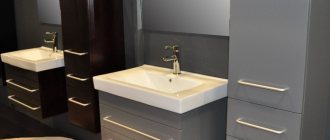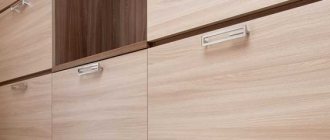49389
Wooden furniture can create an atmosphere of comfort and warmth in any interior. During operation, furniture sets are subject to wear and tear, causing small cracks and chips to appear on the surface of the items. If you see such a defect on your favorite table or cabinet, don’t be upset - furniture wax will come to the rescue. To find out how this product is used, you should understand its properties, application, and varieties.
Basic properties and purpose
Modern cabinets and chests of drawers are subject to mechanical damage as a result of numerous moves and rearrangements, tables lose their attractiveness due to careless handling, so furniture wax remains in demand for minor repairs and care of products made of natural wood, laminate, parquet, chipboard and fiberboard. It is also suitable for repairing chips and cracks in window frames and doors. Furniture wax is used to treat panels, picture frames, wooden boxes and stair railings.
In addition to beeswax, the composition may contain synthetic resins, which give it greater durability, coloring pigment, and natural oils (for example, olive or linseed). Oil with wax provides light protection from moisture and a pleasant matte shine to wooden elements. The main purpose of the product is the renewal and restoration of products. A properly selected composition performs several functions at once:
- masks chips, scratches, small cracks;
- renews the surface of products, adding shine to them and emphasizing the texture of the wood;
- protects furniture from external influences, penetrating deeply into the structure of the material;
- used to enhance or slightly change the shade of wood;
- has antistatic properties, prevents dust from settling.
Products based on natural wax are very gentle on the texture of wood. They cannot radically change the color; they simply renew even heavily worn surfaces and give them a presentable appearance.
Manufacturers offer furniture wax for interior and exterior use; this should be taken into account when choosing a composition.
Varieties for interior use are less resistant to sunlight and moisture. The products differ in the form of release; it can be a hard bar, a pencil, or soft compositions with a texture reminiscent of Vaseline. Furniture wax can be colorless or tinted. In the second case, its shade should be as close as possible to the color of the surface being treated.
Scope of application of furniture edges, product types
Furniture wax can hide scratches or chips
Advantages and disadvantages
The main advantage of the products is ease of use. Hard wax is highly resistant to mechanical stress; repair work does not require special knowledge and skills. The natural components of the mixtures are much safer than their synthetic counterparts. Another plus is that you can make wax for furniture yourself.
Soft and liquid products are completely ready for use. They are easy to apply, dry quickly, in addition to shine, impart a pleasant aroma to the treated surfaces, and renew the appearance of the products. Many furniture wax compositions contain vegetable oil, which helps to reveal the grain of the wood and serves as additional protection from external influences.
The disadvantage of the treatment is the need to frequently repeat waxing, since the product creates a fragile protective coating.
Before using hard wax, it must be heated, so there is a risk of burns. The compositions are not suitable for surfaces on which hot dishes can be placed, or located near heating appliances, since the wax coating spreads due to high temperature. Such protection is also not sufficient in case of significant humidity. In addition, furniture wax will be useless if the furniture has stains from moisture or exposure to ultraviolet radiation.
Pros and cons of using wax
The positive qualities of this product include the following:
- absorbs into the wood without remaining on the coating;
- repels moisture;
- allows you to change the shade of the product;
- removes wood defects well.
We recommend: Aerosol fire extinguishing installations - principle of operation, types, scope of application
Depending on how you use furniture wax for repair or restoration, you can achieve a high-quality final effect. But it also has disadvantages. Among them we list the following:
- lower coating strength compared to varnish;
- negatively affected by ultraviolet radiation.
Kinds
There are several types of furniture wax. Each of them has its own purpose, this should be taken into account when choosing a composition. All important information is contained on the packaging.
- Soft. This composition is similar in consistency to Vaseline; it perfectly emphasizes the texture of wood, gives the surface a matte shine, and is used not only for processing furniture. Wax mastics are used to rub parquet and laminate flooring. Soft wax can fill even deep areas of damage and can mask significant chips and cracks.
- Solid. Furniture products are produced in the form of bars, cylinders, and sometimes resemble wax pencils or crayons for drawing. They can be used without heating or require preheating. This wax is designed to seal cracks and mask chips; it is more resistant to mechanical stress and can make damaged areas completely invisible.
- Liquid. The compositions penetrate perfectly into the fibers of the surface being treated, dry within two hours, and are applied with a brush. They update the appearance, mask scratches, and protect the wood from moisture. Liquid wax is not intended for the restoration of products, but for the care of furniture.
Main types of furniture profiles, characteristics, application
The manufacturer must indicate on the packaging exactly how the composition should be used. In order not to be disappointed with the result, you must strictly follow the instructions.
For minor repairs, it is most convenient to use wax pencils for furniture; they do not need to be heated.
Liquid
Soft
Solid
Wax coated furniture properties
Wax is one of the natural materials, it has excellent water-repellent properties. Nowadays, wax is used to treat furniture not only for purely protective purposes, but interestingly also for decorative purposes. Its main feature is that it does not remain on the surface like, for example, the same varnish, but is absorbed deep into the texture of the wood, the material seems to come to life, it is pleasant to touch and feel it with your hands.
Almost all modern methods of protecting furniture are based on the creation or formation of a protective film, which, although it protects, also covers the natural warmth of the wooden product. Touching furniture coated with varnish, you feel like glass, and wax gives the surface a velvety feel. In order for the wax to penetrate correctly and deeply into the wood, its pores must be cleaned and open for penetration.
From furniture coated with varnish or some other protective layer, you must first remove all its components with a solvent. The solvent must be applied more than once, but until the surface is completely clean. Residual erosions or traces of washing should be carefully washed off with warm water, the main thing is not to overdo it and not to saturate the wood with water beyond measure. Nevertheless, traces of the previous coating will still remain deep in the cracks and microcracks; they must be removed with a stiff brush (again, carefully). After the wood has completely dried, the surface is cleaned with sandpaper, and the sanding is carried out strictly in the direction of the fibers; especially burried elements are cut off without going deep into the texture.
The result should be a perfectly smooth, velvety and pleasant-to-touch surface that is ready to accept wax. There are several types of wax on sale now: one of them is honey-like and thick. This wax should be applied with even, non-fussy movements using a clean cloth that does not leave any lint particles.
How to use it correctly
Before using furniture wax, the surface of the table or cabinet must be wiped free of dust. Old paint or varnish at the restoration site should also be removed. If large-scale work is planned, it is better to use a wax melter - a device for melting furniture wax. For minor repairs, a construction or household hair dryer will be sufficient.
A small part is separated from a block of hard wax with a sharp knife. The composition is heated until plasticity is achieved, the damaged areas are filled with it, and allowed to cool. Excess is carefully removed using a sharp knife. If necessary, the surface is sanded.
There are many shades of furniture wax: to make the restoration invisible, you need to carefully choose the tone.
If the area of the intended repair is small, it is better to use wax crayons or a pencil. These products are applied to the surface without heating. You just need to move it several times, without much pressure, over the area that requires restoration. It should be remembered that they provide a less durable coating.
Soft wax is perfect for sealing chips and cracks on horizontal surfaces. It is applied with a spatula, carefully leveled, allowed to harden, and then sanded and rubbed until shiny with a cloth. The wood is coated with a thin layer of the liquid composition; it is convenient to work with a paint brush. It is better to repeat the procedure 2-3 times. You can use a soft, lint-free cloth. After drying, the surface is polished to a shine.
If you happen to drip furniture wax onto the upholstery of a sofa or chair, remove it with an ice cube. The stain should be frozen well by applying cold to it, and then scraped off with a spatula or piece of plastic. It is easy to wipe off a greasy mark by sprinkling it with talcum powder, starch or crushed chalk. The absorbent composition is covered with paper, pressed tightly and left for a couple of hours. After this, the surface is cleaned with a brush.
When the upholstery material is durable, does not fade, and can be removed, the easiest way to remove the stain is to rinse it with hot water and then wash the area with soap or powder. The wax will dissolve under high temperature. Washing will take care of any remaining problem.
Ways to decorate furniture with your own hands, useful tips
White wax for wood. How to tint wax correctly to get white color
Natalya Viktorovna Ruzaeva, Quality Control Technologist
Wax coating is popular due to its unusual satin effect, which cannot be achieved using other coloring agents. White wax for wood is in demand, it has a light, cool shade, looks beautiful on walls and ceilings and perfectly masks wood imperfections.
What will you learn about in the article?
- Features of white wax
- Video: how to paint with wax correctly
- What white wax should I buy for wood?
- White wax for wood: tinting features
- Rules for applying wax emulsions
- Video: what paints and waxes we use in our workshop
Features of white wax
The coating is a natural preservative made from natural ingredients. It has an attractive matte tone that visually transforms the wooden surface.
White wax is most commonly used on wood furniture such as table tops. It is also used to cover floor coverings and wooden wall panels. A high-quality composition performs not only an aesthetic, but also a protective function. The high content of esters and fatty acids ensures the formation of a thin layer. It reduces the effect of adverse environmental factors, including high levels of humidity. The material has good water-repellent properties. And hard wax protects even floors and stairs and does not wear off from mechanical stress.
Photo 1. Imitation timber covered with white wax
4 reasons to buy white wax for wood:
- Masks the uneven texture of wood products. Using wax, you can achieve a beautifully uniform surface, even if the product is made from different types of wood.
- Light tinting allows you to create an unusual artistic effect. Such furniture and decorative items will look good both with and without additional accessories.
- The snow-white coating visually enlarges the space and makes the interior more comfortable.
- White wax can be used to prepare the surface for subsequent painting using colored coatings. This allows for an interesting, two-tone grout paint job.
Photo 2. White wax from Remmers
Video: how to paint with wax correctly
What white wax should I buy for wood?
To treat a wooden surface, special waxes or products containing oil and wax can be used. Such paints and varnishes have high protective properties. They immediately form an ultra-thin film, which increases the wood’s resistance to adverse environmental factors. Perfectly prevents abrasion and minor damage.
White wood wax with oil is also very practical. The oily solution is quickly absorbed and completely fills all cracks on the surface. The solution has a light texture and does a good job of protecting wood from rotting and deformation associated with drying out.
Photo 3. Brushed and waxed imitation timber
White wax for wood: tinting features
For decorative and protective coloring, wax with different color intensities is used. You can achieve the desired shade and degree of saturation using tinting. The wax is tinted using universal pigment pastes until the desired tone is achieved.
Pigment pastes must be added gradually or using special equipment. In this case, the total volume of the product used should not exceed 15% of the total weight of the wax. This is especially true when processing small products. Using an excessive amount of pigment can negatively affect the quality characteristics of the coating. You can purchase a ready-made product from us.
Photo 4. Imitation of pine timber under white wax
Rules for applying wax emulsions
White wood wax should be applied to a previously prepared surface.
Preparing a tree includes several stages:
- Removal of the old coating mechanically followed by treatment with a solvent. You can get rid of any remaining solvent using warm water.
- Sanding with an eccentric machine using 150 grit.
- Step-by-step application of wax to a clean and dry surface. First you need to treat a flat surface, then carefully walk along the joints where the first layer did not work.
- After drying, the wood can be polished with a soft pad or rag. The drying time will depend on the type of wax coating. On average it takes 1 hour.
Photo 5. Wax for wood
Video: what paints and waxes we use in our workshop
White wood furniture wax can be applied in one or two coats. When re-processed, the surface acquires a characteristic beautiful shine. To fix the effect, special protective hard wax is sometimes used. The transparent coating is applied after the wax has completely dried. The use of this composition improves the aesthetic characteristics and increases the water resistance of the surface.
See how we can
February 26, 2020361
Flawless white in the decoration of a one-room apartment
Apartment renovation is not really our area of expertise. But what can you not do for a regular customer? The house is done, now the apartment is done
Flawless white in the decoration of a one-room apartment
February 26, 2020
361
May 27, 20194414
White imitation timber in the interior of the house. Photo of the finished object
Imitation timber made from red-barked Angara pine, having appeared on the market, very quickly became a brand. And no wonder. Made from a side board (the company takes the entire middle of the log onto a block), the panel has virtually no knots; even in low grades, this wood is superior to both the needles of the northern regions and larch.
White imitation timber in the interior of the house. Photo of the finished object
May 27, 2019
4414
February 19, 20193286
Various options for white color in the interior of the house
LesoBirzha company is with you again
with new ideas and your completed projects.
Today we are putting on display the interior decoration
of a two-story cottage in the Tula region of SNT “Romanovskie Dachas” in light colors made of expensive, unique
Angarsk pine
.
Various options for white color in the interior of the house
February 19, 2019
3286
December 13, 20182175
Imitation of Angarsk pine timber in interior decoration
Imitation of timber
It was not at all by chance that the customer chose for the interior decoration of a private gym in the Zaokskie Prostori communal enterprise.
The harsh Siberian climate had a beneficial effect on the quality and properties of this type of wood, which are also preserved during subsequent processing into building material. Imitation of timber from Angara pine in interior decoration
December 13, 2018
2175
View other works
Self-production
Wood waxing is easy to make at home. To do this you will need natural beeswax, turpentine and a little rosin. To 200 g of wax add 50 g of rosin and 100 g of high-quality turpentine. The wax is melted in an enamel container in a water bath, rosin is gradually added to it while stirring in small portions, and after the ingredients are completely dissolved, turpentine is poured into the mixture.
The finished product thickens as it cools. Its quality is not inferior to industrial designs.
The main component in the production of furniture wax is beeswax.
What can be replaced
If you urgently need to get rid of scratches on furniture, but you don’t have a wax composition on hand, you can use improvised means. A walnut is perfect for masking the problem. The cleaned kernel should be rubbed several times over the scratch area without pressing, and then the treated area should be coated with varnish.
To update light-colored furniture, use a mixture of vegetable oil and lemon juice. An equal number of drops of each of the components of the mixture must be thoroughly mixed, applied to the area to be restored and rubbed in without pressure. For work, use a soft cloth.
Using cool tea leaves you can mask minor scratches on dark furniture. A small amount of liquid is applied to the problem area and left to be absorbed. The treated area is then thoroughly polished.
It’s easy to make a small chip or crack on furniture invisible using ground coffee. You need to brew a strong drink, and then rub coffee grounds into the damaged area. This method is justified if you urgently need to disguise a flaw on dark items.
Folk remedies are suitable as an emergency method; for high-quality restoration it is better to use industrially produced compounds.
Waxing is one of the most ancient and safest ways to preserve the beauty of wood for a long time, emphasize the uniqueness of its natural design, and protect the surface from moisture and rotting. Modern high-quality and environmentally friendly compositions based on natural wax successfully cope with all tasks of caring for furniture, make it easy to carry out minor repairs, make restoration invisible, and give the treated products shine, dullness and a subtle aroma.
A small crack can be hidden using ground coffee
Tea leaves will help remove scratches from dark furniture
The walnut core can easily cope with minor scratches on furniture
What is a furniture wax pencil used for?
The standard composition of wood wax includes a natural base, various resins, oils and other components. There are many types of products produced by manufacturers. For different types of work, soft material in a package, hard material in a briquette, or a wax pencil are used. How to use a wax pencil for furniture is described below. It is used for retouching scratches and other small work.
We recommend: How to choose wool for insulating a pitched roof?











